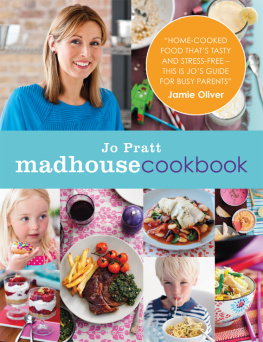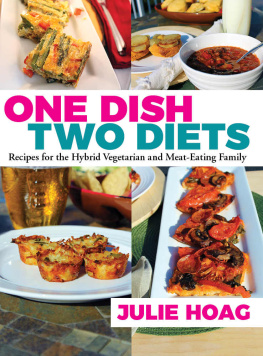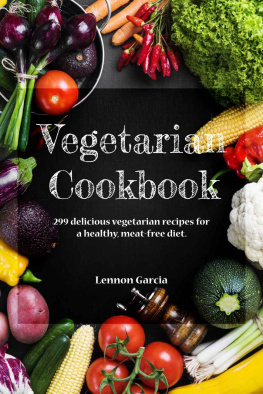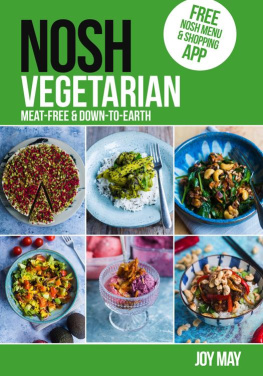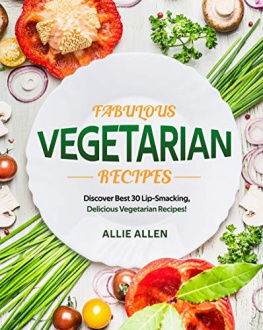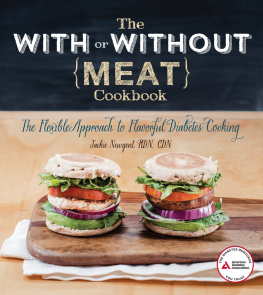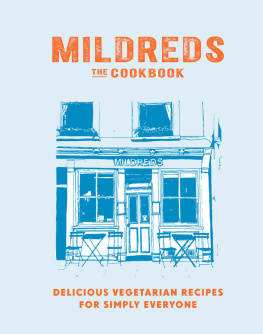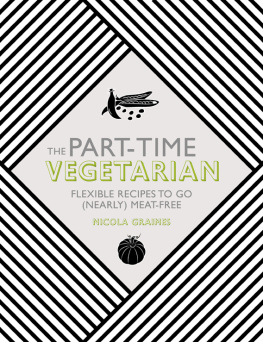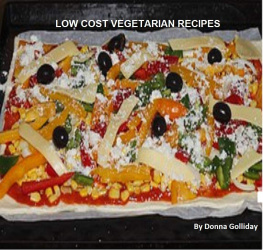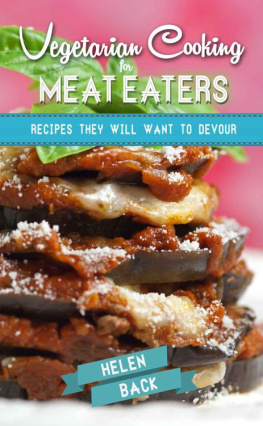the
flexible
vegetarian
JO PRATT PHOTOGRAPHY BY SUSAN BELL

Introduction
Understanding what makes a flexible vegetarian is fairly simple. A flexible vegetarian is someone who wants to cut down on the meat and fish they eat, choosing to have it only on occasions, or maybe only if its organic. It could also be someone who wants to stop eating meat completely, but still easily cater for meat-eating family and friends. They might want the ingredients in their meals to be more sustainable, kinder to the planet and perhaps even cheaper and healthier. And they want to be able to cook in a flexible way, adding meat and fish when required, but have a store of brilliant, all-vegetarian recipes for every occasion. Most of my week passes easily, satisfyingly and deliciously meat-free.
But every so often I like to flex those vegetarian boundaries. I might be throwing a dinner party where I want to provide for all tastes, or maybe Im cooking Sunday lunch for the in-laws where meat is a non-negotiable (hi Peter!), or perhaps I need to use up some leftover chicken from that aforementioned Sunday lunch. Sometimes, I might just fancy a bit of salmon myself. Thats where the inspiration for this book comes from for those vegetarian-plus moments. The recipes are designed so that they work alone, or with the addition of meat or fish. You might enjoy the ) for you, and real bacon for your partner.
There are dishes to suit all occasions, moods, tastes and guests. All my recipes are also carefully considered for their nutritional balance, without relying on added meat or fish. Its so easy to add protein using pulses, nuts, seeds, soy products, wholegrains, eggs and dairy products, all of which contribute brilliant flavours and textures. There is such an incredible range of vibrant, unusual vegetables and plant-based ingredients on offer in supermarkets, local corner shops or farmers markets, and I wanted to write a cookbook celebrating these. Carefully compiled, tried and tested by me, this book is bursting with flavoursome, fulfilling recipes that put vegetables first with room for a twist. I hope you enjoy cooking them as much as I have writing them!
breakfast / brunch
No day should start without a delicious breakfast, whether youre in a hurry or have time to spare.
This chapter is full of filling and bright alternatives to the traditional fry-up, from courgette fritters and tofu bacon to a wholesome quinoa bowl.
soups / broths
Im a big fan of hearty soups and soul-warming broths, and their ability to serve so many purposes: comfortingly cosy dinners; light, aromatic lunches; tempting bowls to kick-start a dinner party. Pack the veg in with an ). These recipes are miles away from a tired tin of minestrone.
small plates
These dishes are designed to be versatile: serve individually as a starter, as a light meal, as a side, or dish up a tapas-style sharing feast for friends and family.
big plates
These are recipes to wow with.
Inspired by cuisines from around the world, there is something here to suit every mood. There are recipes to take your time over like the .
dips / bits
A store cupboard of tricks to keep up your sleeve: colourful dips, unusual pestos, vibrant hummus, an indispensable veg stock, zingy dressings and irresistible nibbles. These are the little extras that will revolutionise your cooking, helpful to have on hand for that final flourish.
Perfectly cooked meat / fish
Meat? In a vegetarian cookbook? Well, yes. Its handy to include some simple and tasty meat and fish ideas that you can serve with your vegetarian recipes as the need arises.
These will give you inspiration on flavours and tips for perfect cooking.
The flexible store cupboard
For flexible vegetarian cooking any day of the week, its good to maintain a well-stocked store cupboard and fridge (including plenty of fresh vegetables). Here are some core staples its worth keeping in stock.
Beans
For the sake of time and convenience, I use tinned beans most of the time. There is such a huge variety available these days, and they are a fantastic source of protein and fibre; great for bulking out a meal in a similar way to meat.
Cheese
Cheeses are good at providing a variety of flavours and textures, either as a main ingredient or as a seasoning.
Its worth mentioning that some cheeses are not strictly vegetarian as they contain animal rennet. Parmesan is the best known one, and is used a fair amount in this book, but there are many vegetarian parmesans available that work just as well, or simply substitute for another hard cheese. Youll see I also use quite a lot of paneer, feta and halloumi these are all very adaptable vegetarian cheeses.
Eggs
The ultimate convenience food and a powerhouse of nutrition, eggs are one of my favourite ingredients due to their versatility. Opt for free-range or organic, and for the recipes in this book I always use large (unless otherwise stated).
Grains
Forming the body of many vegetarian dishes, these provide both carbohydrate and, in most cases, protein.
Keep a good selection in your cupboard so you have them when required. Spelt, freekeh, quinoa, barley, bulgar, faro, couscous, rices, spelt, oats these are all easily available and have a long shelf life.
Lentils
A very rich source of protein and carbohydrates, lentils come in various colours, shapes and sizes, each with their own uses. Green and brown are great in salads and stews as they usually retain their shape once cooked. Red split and yellow will break down when cooked, creating a paste/pure that makes them a good thickening ingredient in soups, stews and classic Asian dhals.
Miso paste
Miso paste is the ultimate ingredient for that savoury umami taste (yeasty and salty).
Miso paste
Miso paste is the ultimate ingredient for that savoury umami taste (yeasty and salty).
Its made from fermented soybeans and can be used to flavour broths, marinades and dressings. Various kinds are available, but the most common are white (sweetest and mildest) and brown/red (richer and stronger).
Nuts and seeds
Packed full of protein, healthy fats, vitamins and minerals, nuts can be utilised in many ways, from mixing into a savoury crumble topping to making cream, dips and pesto.
Smoked paprika
This fantastic spice adds a rich, smoky, almost meaty flavour to recipes. You can get both mild and hot so make sure you know which you are using as the hot one can be pretty fierce!


